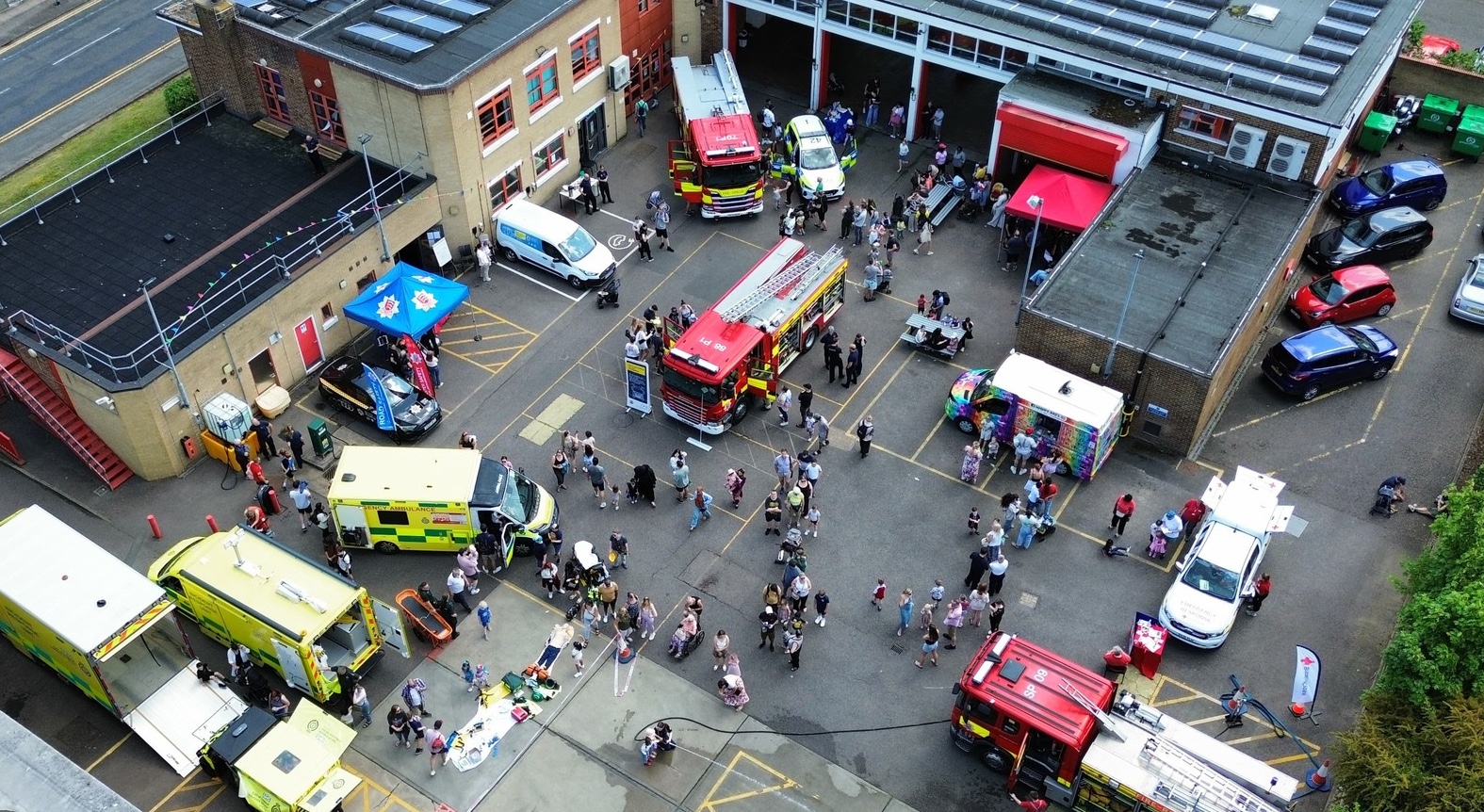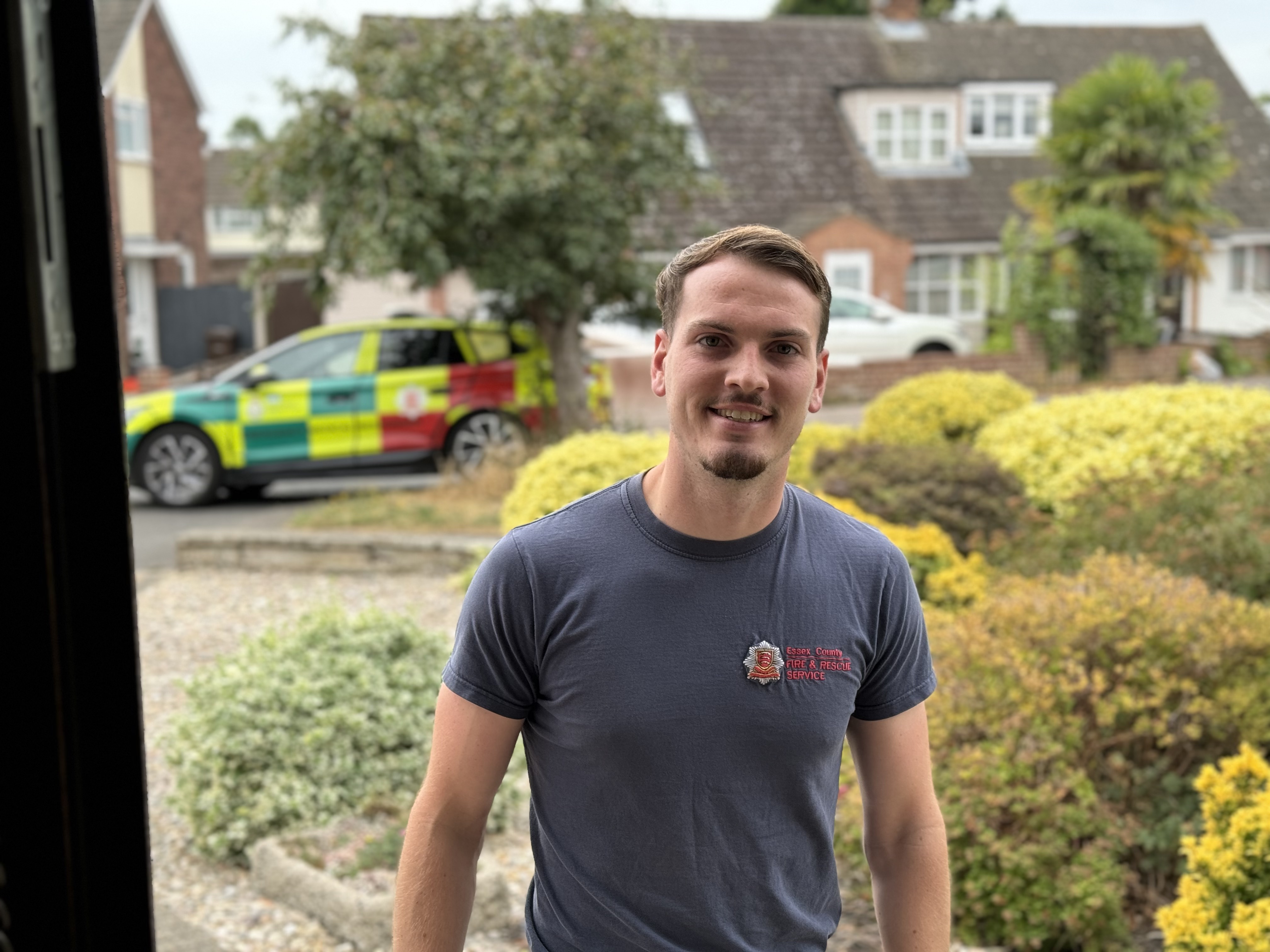Long Ladders to the Alps and Beyond - part 1
A short history of ‘High Reach’ fire appliances - Part 1
Possibly the most spectacular and also the most expensive fire appliance in service with UK Fire Services today is the Aerial Ladder Platform. The ALP, as it is generally known in the Service, is the culmination of a long line of ‘high reach’ fire appliances that date back to the early 1900’s, although modern developments in Turn Table Ladders suggest that there may be a change coming soon.
The need for tall ladders was understood from the very early days of organised fire-fighting, as buildings became more sophisticated with multiple floor levels. In the late 1830’s the wheeled escape ladder was the first purpose built ladder specifically designed to rescue people from high windows. There were problems though. Taller buildings were being built and the wheeled escape ladders were unable to reach above the fourth floor of a building. They also needed to rest their top (Head) against a building to make them stable. Ladders were needed to reach the higher floors. By the late 1890’s the London Fire Brigade had ‘Long Ladders’ that were 70ft (21m) tall but, again, the head of the ladder needed to be rested against a building. This precluded the opportunity for the ladder to be used as a free standing water tower. Some escapes were made with supporting props to enable them to free stand, but it was a precarious perch for the firefighter balanced at the top struggling with a charged hose at high pressure.
In the early part of the 20th Century various attempts were made to build a vehicle with a ladder attached to a turn-table, which would be able to stand unsupported, away from a building and act as a water tower. It could also be depressed into a building to effect rescues.
Several companies endeavoured to design and construct a suitable ladder, most notably Simonis in England and Magirus in Germany. The vehicles were horse-drawn and some Fire Brigades experimented with them. The Magirus ladder was of wooden trussed construction and could be raised to 85ft (26m). This soon became the preferred appliance for brigades that could afford them. Although originally operated by hand winches, they were soon modified to enable the ladder to be elevated by compressed air. By 1920 many of the ‘turn- table ladders’ (TL) had been re-fitted to motor chassis. The use of ‘power take offs’ from the vehicle gearbox allowed for the ladders to be ‘motorised’ in all fields of movement. An innovation in the early part of the 19th century was electric power for motor vehicles. The London Fire Brigade ordered several fire appliances using battery-electric traction, including chassis to re-mount their wooden turntable ladders on. Both Braun and Cedes appliances were trialled, with Cedes eventually taking the contract. The last horse-drawn fire appliance in London was a T.L. which was withdrawn from service in 1922. Its ladders were remounted onto a Dennis Bros. chassis.
In the 1920s two more companies began to construct TLs. The German company of Metz and the English company of Merryweather and Sons, both were well known fire appliance manufacturers.
Improvement in the design and construction of TLs continued and at the start of the 1930’s a major development changed the whole concept of turn-table ladders. The ‘all steel ladder’ appeared on the market, with the three leading companies, Magirus, Metz and Merryweather and Sons all producing ladders at various lengths to suit the requirements and financial capability of fire brigades. Magirus produced a ladder of 105ft (32m), but Metz made the tallest ladders at both 120ft (36m) and 150ft (45m).
Magirus ladders were imported into the UK by John Morris and Sons, a fire engineering company from Salford, Manchester and mounted on Dennis Bros. chassis. The Metz ladders were delivered to Leyland Motors and mounted on Leyland chassis. The Merryweather ladders were generally mounted on either Albion chassis or on specially constructed chassis made by Merryweathers themselves.
The new generation of turn-table ladders were much heavier than the old wooden ones. Both the steel ladders and the vehicles themselves were of much stronger construction. As a result, it was necessary for the appliances to have four ground jacks for stabilising the vehicle when the ladders were extended. They also had ‘axle locks’ that wedged between the body and the rear axle to immobilise the rear suspension. Furthermore, each type had a different ladder elevating system. Merryweather’s used two long screws to elevate the ladder, whilst the Magirus system used a large hydraulic ram. The Metz appliances had two large quadrants at the base of the ladder around which large chains were attached to pull the ladder upright.
Many fire brigades began to purchase the new steel TL’s, although they were by now very expensive additions to fire brigade budgets. Many were fitted with mid-ships mounted pumps and a small water tank with a hose reel, so that they could be used as a pumping appliance, not only for supplying the ladder with water when it was used as a water-tower, but also for use on other fires if necessary.
As war clouds began to threaten in the latter part of the 1930’s, the supply of ladder sets for new TL’s from Germany ceased to be available and as a result, Merryweather and Sons became the only manufacturer of turn-table ladders in the UK.
Fire Brigades soon found themselves on a war footing. Thousands of pumps and utility pattern fire appliances were being ordered by the Home Office to equip the newly formed Auxiliary Fire Service. Many fire brigades had not yet received their TL’s from the manufacturers and both Leyland Motors and John Morris and Sons had chassis standing idle waiting for the German ladder sets that were not going to arrive. The Government stepped in and orders were given to Merryweather and Sons for the necessary 100ft ladders to complete the majority of outstanding orders.
The benefit of TL’s being used as water towers was soon felt as the Blitz got underway. It was realised that there were insufficient turn-table ladders available to fight the huge number of major fires. As a result, the Home Office ordered a considerable number of Merryweather 100ft ladder sets that were mounted on unused bus chassis by Leylands and also new build chassis by Dennis Bros.
The Home Office also ordered a shorter, less complicated turntable ladder for use in provincial towns with fewer ‘high rise’ buildings. Based on the Austin K4 chassis with a Merryweather 60ft (18m), three-section ladder set, these very basic appliances were hand-operated in all fields of movement. A crew shelter was built behind the cab, which prevented a complete 360-degree rotation. Initially reliant on a pumping appliance to provide water for fire fighting, many of these TL’s were subsequently fitted with American ‘Barton Front Drive’ pumps. These were mounted in front of the vehicles radiator grill and connected to the engine crank-shaft. A large lever was fixed to the base of the ladder to enable the crew to pull it into an upright position prior to extending it. Once upright, the ladder was locked into position and could not be elevated or depressed further. The ladder was extended by hand winch. Soon after the issue of these ladders to fire stations it became obvious that a crew of at least 4 was required to operate them. Vehicles were quickly modified by the fitting of a power winch to elevate the ladder and some were further converted to have powered extending winches. This enabled the crew to be reduced to two if necessary.
End of Part 1
M.Beale.
All Fired Up’ is a series of articles written by our Museum volunteers about the history of the fire service in Essex.
Volunteers spend many hours researching the collection, often uncovering untold stories and finding interesting facts that would otherwise be lost.
To share these invaluable snippets of history with you we are making some of this research available. Read the full list here.


